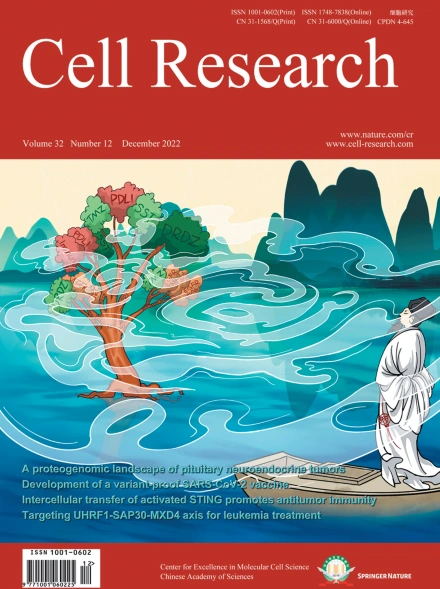
Advanced Search
Submit Manuscript
Advanced Search
Submit Manuscript
Volume 32, No 12, Dec 2022
ISSN: 1001-0602
EISSN: 1748-7838 2018
impact factor 17.848*
(Clarivate Analytics, 2019)
Volume 32 Issue 12, December 2022: 1105-1123 |
Targeting UHRF1-SAP30-MXD4 axis for leukemia initiating cell eradication in myeloid leukemia
Cheng-Long Hu1,2,† , Bing-Yi Chen1,† , Zijuan Li1,† , Tianbiao Yang3,4,† , Chun-Hui Xu1,† , Ruirui Yang3,5 , Peng-Cheng Yu1 , Jingyao Zhao6 , Ting Liu7 , Na Liu1 , Bin Shan8 , Qunling Zhang9,10 , Junhong Song7 , Ming-Yue Fei1 , Li-Juan Zong1 , Jia-Ying Zhang1 , Ji-Chuan Wu1 , Shu-Bei Chen11 , Yong Wang1 , Binhe Chang1 , Dan Hou1 , Ping Liu1 , Yilun Jiang1 , Xiya Li1 , Xinchi Chen1 , Chu-Han Deng1 , Yi-Yi Ren1 , Roujia Wang12 , Jiacheng Jin12 , Kai Xue2 , Ying Zhang13 , Meirong Du13 , Jun Shi14 , Ling-Yun Wu12 , Chun-Kang Chang12 , Shuhong Shen7 , Zhu Chen2 , Sai-Juan Chen2 , Xiaolong Liu6,* , Xiao-Jian Sun2,11,* , Mingyue Zheng3,4,* , Lan Wang1,*
1CAS Key Laboratory of Tissue Microenvironment and Tumor, Shanghai Institute of Nutrition and Health, Shanghai Institutes for Biological Sciences, University of Chinese Academy of Sciences, Chinese Academy of Sciences, Shanghai, ChinaAberrant self-renewal of leukemia initiation cells (LICs) drives aggressive acute myeloid leukemia (AML). Here, we report that UHRF1, an epigenetic regulator that recruits DNMT1 to methylate DNA, is highly expressed in AML and predicts poor prognosis. UHRF1 is required for myeloid leukemogenesis by maintaining self-renewal of LICs. Mechanistically, UHRF1 directly interacts with Sin3A-associated protein 30 (SAP30) through two critical amino acids, G572 and F573 in its SRA domain, to repress gene expression. Depletion of UHRF1 or SAP30 derepresses an important target gene, MXD4, which encodes a MYC antagonist, and leads to suppression of leukemogenesis. Further knockdown of MXD4 can rescue the leukemogenesis by activating the MYC pathway. Lastly, we identified a UHRF1 inhibitor, UF146, and demonstrated its significant therapeutic efficacy in the myeloid leukemia PDX model. Taken together, our study reveals the mechanisms for altered epigenetic programs in AML and provides a promising targeted therapeutic strategy against AML.
https://doi.org/10.1038/s41422-022-00735-6